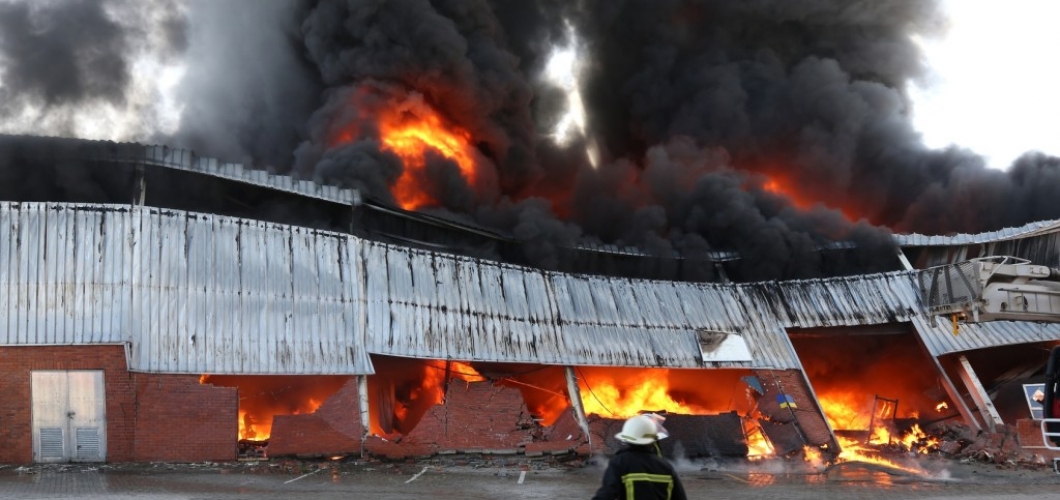Clean Agent Fire Suppression
How would your business survive a fire?

In this digital age, your business simply can’t afford a major interruption in operations. A fire can be devastating to your firm’s reputation and financial future. How quickly you recover depends on choosing the best fire protection and fire suppression agent. Clean agent fire suppression systems work hand-in-hand with state-of-the-art detection to identify and extinguish a fire hazard. It’s safe for people and equipment. EMI designs the protection in and the down time out.
Rules of Thumb for Successful Clean Agent Suppression Systems
The decision to protect your Mission Critical Assets with a Clean Agent Suppression System is an important step in Risk Management. Because significant funds as well as time are involved, it’s important to do it right the first time and be confident that all risks are addressed. Here are some guidelines to help you cover all the bases.
Experience
First, choose an experienced firm to take overall responsibility for the design, supply and installation of the complete Clean Agent Suppression System.
When considering such a firm, look at their:
- Reputation
- History of successful completions of recent local projects of similar or larger size
- Contract bonding capability (shows financial stability)
- Local engineering and design capabilities
- Equipment available locally, now
- System Specialist availability 24-hours a day and their certifications (NICET etc.)
- Recharge capabilities, proven – not just promised
Many firms who bid and sometimes install Clean Agent Suppression Systems are well meaning but inexperienced in their approach. Clean agent systems should be their primary business not just a sideline. Too often, a firm with a background based on experience with portable fire extinguishers, sprinklers and safety equipment will try to design and install Clean Agent Suppression systems. These kinds of backgrounds will not provide the technical abilities necessary to handle the intricacies and technical demands of more sophisticated Fire Protection Systems. Clean Agent Systems incorporate electrical interfaces, electronics and mechanical systems. Extensive experience in this type of system is perhaps the most important criteria for a successful project.
Customer Satisfaction
Ask for a list of Clean Agent satisfied customers and design professionals that the prospective company has worked with in the recent past. Get contact names should you wish to discuss or examine any of these projects. They should be projects with similarities to yours.
A well executed system includes customer satisfaction in the process from start to finish. The firm you choose will undoubtedly be with you for many years in the maintenance and care of the system. The relationship should be comfortable from the start. And it should remain that way for the life of the system. Ask for a list of customers that the company has supported for the last 10 or 20 years.
Planning the Project
A typical sequence for a Clean Agent Suppression System installation would include, but not be limited to, the following:
- Meetings would take place with the System Contractor and your architect and other disciplines such as Mechanical and Electrical Consultants, if appropriate. In any case, a checklist of items such as details of scope, responsibility matrix, timeframes and system options would be discussed and outlined at this meeting.
- If the area to be protected is existing, a survey of the site should also take place to obtain physical information pertinent to the design and installation of the system.
- From the drawings and other information obtained at the meeting and survey, a quotation would be submitted to you, It would cover the equipment, installation, test, commission and maintenance of the Fire Protection System. The quotation should incorporate and be in accordance with applicable Local codes, National Fire Protection Association Standards, Underwriters’ Laboratories approvals, and Insurance Companies requirements..
- Upon receipt of an order to proceed, the Systems Contractor would prepare system design documents, which would be submitted to appropriate approval authorities with copies to you, as well. Work would not proceed until approval of the design documentation was obtained.
These submittals (design documents), when done according to the NFPA code, are quite complete and give you a clear picture of the project at its earliest stage. The system design drawings should be done utilizing a computer program to assist in the sizing of Clean Agent piping and discharge nozzles, to ensure proper distribution of agent within the 10 second discharge time requirement. Many other items are addressed and outlined in the NFPA 2001 Clean Agent Code.
- Upon receipt of design drawing approval, the Systems Contractor would coordinate and begin the installation of the system.
- After completion of the installation, testing and commissioning of the system are required with the Authority Having Jurisdiction, usually the local Fire Marshal. We work regularly with all of the State and Federal AHJ’s, and this requirement is an important formality. An enclosure integrity test is also usually required (door fan test). Make sure the System Contractor has the necessary equipment to run this final check that assures your systems ability to adequately protect your facility.
- Upon completion of the testing and sometimes associated with it, a complete familiarization run through of the system’s operation is presented to all of your personnel who may be involved with the fire systems. This also includes a film showing the effectiveness and safety of Clean Agent as an extinguishing agent.
- A semiannual maintenance and service contract would be offered to you. Our 24-hour emergency telephone number and our Clean Agent recharge facilities would be discussed with your staff.
After the Installation
The completed system will have a warranty but building codes require regular testing and inspection in addition to make sure all functions are ready to protect your assets round the clock. A suitable System Contractor will have an affordable plan to accomplish this as well as a 24/7 response team to assist you no matter when you might need it. They should also be able to refill and recondition your system within
24 hours in case you have a fire and the system discharges. This is an important consideration that you hope you’ll never need.
Also ask about extended warranty on equipment. For example: most companies only offer 1 year. We offer 5 years, because we use the best equipment and we design our systems for durability and reliability.
Other Considerations
During the general construction of the areas to be protected, there are items that affect the Clean Agent Fire Protection that should be considered, such as:
- The Agent being released is a heavier than air gas and it will escape from the spaces being protected unless all openings are sealed at time of system discharge. Proper design will address this.
- Doors should be tight fitting. Doors that are not normally closed or that could be wedged open must be fitted with pneumatic closure and/or electromagnetic release devices controlled contacts in the Clean Agent control panel.
- Any make up, supply, or exhaust air must be shut off upon Clean Agent System discharge. This may necessitate the installation of tight fitting motorized dampers controlled by low voltage dry contacts in the Clean Agent control panel.
- Windows that could be opened or air diffusers would have to be sealed unless some method of closing them automatically at time of system discharge could be devised.
- It would be advisable to monitor the Fire Protection Systems at the Main Building Fire Alarm Panel. This could necessitate the installation of wires between the Fire Extinguishing System control panel and the Building Fire Alarm Panel.
Many other items should be addressed in the design checklist including:
- Location of Clean Agent control panel or panels, flush or surface mounting
- Location of Clean Agent containers, floor mounted, wall mounted, above ceiling mounted. Located in space, in adjacent space or on adjacent floors
- Concealment of Clean Agent discharge piping
- Installation of wiring in conduit (plenum cable for suppression systems is usually a bad idea)
- Card Access Security System
- Under floor Moisture Detection
- Fire/Smoke Detection for Adjacent Areas
- Electronic Monitoring of Sprinkler Systems
- Portable Fire Extinguishers for Protected Spaces
Summary
Designing and installing a Clean Agent System that will protect your Mission Critical Assets doesn’t have to be a difficult process if you work with an experienced firm that takes care of the details as a matter of course. Extensive checklists, familiarity with the code and the technical knowledge to put it all together should be what you expect and get from your qualified System Contractor. If they don’t ask the right questions, they won’t make it easy for you and provide the necessary security for your Assets.
The building codes are a good place to start, but blindly following them won’t necessarily give you the system that will give you the best protection for your dollar. A minimum code is a long way from a well thought out design. Design experience won’t cost you money; it will save you money, time and your business if you have a fire.
Ask to see a design checklist of items that will be addressed during the design, installation, testing and maintenance. If it doesn’t look complete and comprehensive, your system probably won’t be either. Low cost shouldn’t be your only consideration, unless a low cost parachute sounds like a good idea to you. Invest in quality to protect your business



